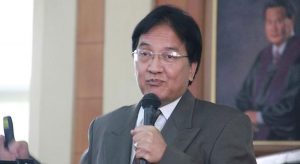THE PESO has been “overvalued” far too long, putting the Philippines at a disadvantage relative to Indonesia, whose exports have become more competitive as a result, a former chief economic planner said.
Former National Economic and Development Authority (NEDA) Secretary Cielito F. Habito, speaking at a briefing at the University of the Philippines School of Economics on Monday, said: “We should undervalue our currency. We overvalued our currency for far too long.”
He cited the case of Indonesia, which made the rupiah weaker “to gain export competitiveness.”
“It could work for us, but the Bangko Sentral ng Pilipinas (BSP) is independent. It is they who will determine if the policy will lean towards that undervaluation,” he added.
Bank of the Philippine Islands Lead Economist Emilio S. Neri, Jr. pointed to another approach — rebuilding foreign reserves.
“When the currency is being pressured to strengthen, what the BSP had been doing was to rebuild our foreign currencies,” he said.
The BSP estimates that gross international reserves declined 0.8% to $99.8 billion at the end of June, from $100.6 billion a month earlier.
“When (the peso) hit P58, what the BSP could’ve done was buy dollars at P58 and prevent it from going down,” he added.
In October, the peso hit a record low of P59 against the dollar in the wake of the Federal Reserve’s aggressive rate hikes.
The BSP hiked policy rates to avoid a narrower interest rate differential with the Fed and used its dollar buffers to mitigate volatility in the peso.
The Fed raised rates by 500 basis points (bps) to 5-5.25% starting last year, while the BSP raised by 425 bps, bringing benchmark rates to 6.25%.
The peso has since returned to the P55 level against the dollar this year, closing at P55.69 on Monday.
The Economist’s Big Mac Index issued in February considered the peso 46.9% undervalued against the dollar.
The index is based on the theory of purchasing power parity, which states that in the long run the exchange rates of any two economies should move towards the rate that would equalize the prices of an identical basket of goods. — Luisa Maria Jacinta C. Jocson

